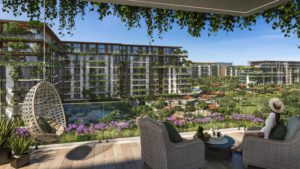Citizen Wellbeing Will Drive Architecture Trends In The Middle East For 2020
In line with the region’s visionary governments to create happier and livable urban communities, industry experts from CallisonRTKL (CRTKL), a global consultancy specialised in architecture, design and technology with offices in Dubai, have identified that the design and architecture industries are adopting urban technology and scalable smart city solutions. This is to create cities that enhance the wellbeing of citizens and push for a positive society, a trend that will be deployed and developed in the region over the next decade.
Smart cities have been identified as a key pillar in reducing energy consumption, optimising traffic flows, monitoring air quality, automating waste management and digitising government functions, all of which are observable factors affecting wellbeing. Driven by smart technology, cities are able to adhere to fundamental livability problems facing urban communities in the region.
For example, in line with His Highness Sheikh Mohammed bin Rashid Al Maktoum, Vice President and Prime Minister of UAE and Ruler of Dubai’s vision of adopting a methodological approach to measure and sustain happiness, tangible ‘quality of life’ improvements will be offered by various smart city innovations and technologies.
“In recent years, smart cities have transitioned from being novelties to becoming principal targets of urban policy, enabling cities to achieve social benefits for residing citizens,” said Matthew Tribe, Executive Director at CallisonRTKL.
Commenting on economic benefits of smart technology, Paul Firth, Senior Associate Director, Shopping and Entertainment Districts at CallisonRTKL, said: “The implementation of smart construction machines have encouraged efficient design and construction processes making deliverables faster and more repeatable while retaining authenticity.”
Alongside an increased willingness by property and architecture firms to implement smarter design and building technologies, there has also been a significant momentum to improve energy efficiency across the country to comply with current green building regulations. Complying with social and environmental objectives may provide greater opportunities for wellbeing amongst residents as it allows for increased green spaces, reduced energy consumption and less pollution.
Tribe added: “Planning, designing and developing smart cities paves the way for architects and developers to build infrastructure that contributes to a more sustainable and productive environment. Rather than contributing to carbon emissions, smart infrastructure contributes to empowering citizens as it provides smart solutions to everyday problems.”
The upcoming period will be the testbed of new technologies in urban planning and architecture as it will pave the way to showcase how smart technologies can improve living standards. The successes and failures of the concepts will provide opportunity and insight into how the modern day user has evolved, allowing the future of design to take a one step forward in creating solutions that are adaptable to an individuals’ needs and tackle issues that arise from urbanisation.
“Whether it’s using smart simulations to optimise traffic and urban planning layouts to reduce congestion, sensors in buildings and objects to reduce the amount of wasteful resources, or human scale technologies in houses that control and regulate mechanical services to reduce our carbon footprint, developers are working towards a more sustainable future to improve the wellbeing of citizens region-wide,” said Firth.









